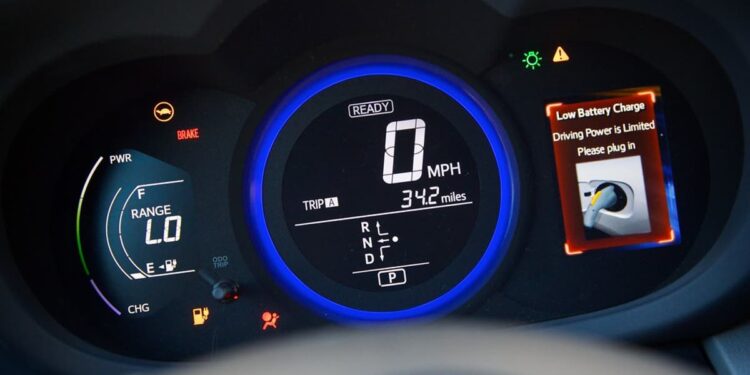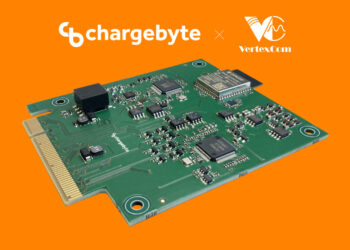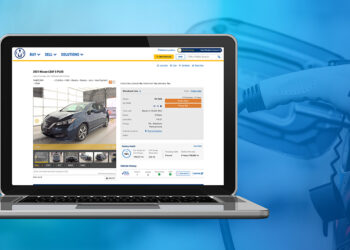Buying a fully electric car or pickup truck presents a whole new world of possibilities, like never needing to pump a single gallon of fuel. It also raises many questions, like where and how to charge your electric vehicle, including beyond your home or office. Proving that EVs can power a typical trip is an important psychological hurdle to overcome for range anxiety — that drivers’ fear of being stranded with an out-of-charge vehicle before reaching their destinations or the closest available charging station.
Cleantech can help. Whether it is getting comfortable with charging apps or trying out the newest portable EV charger, tools out there can offset range anxiety through planning and know-how.
There are currently more EVs on the road than ever before. Global EV sales reached a record-high of 6.9 million in 2021, a 107% increase from 2020. It is the first time since 2012 that the global EV sales doubled in one year.
Of the vehicles sold, 98% were light duty vehicles and 2% were heavy duty vehicles. EVs are becoming more affordable, with a whole slew of tax credits soon to be available due to the Inflation Reduction Act (IRA). Yet some people do still experience range anxiety, particularly in areas where the number of EVs on the road is growing rapidly, where public charging infrastructure might lag behind, or where charging is concentrated in areas such as cities or along motorways.
Reducing Range Anxiety Through CleanTech
Worries about range anxiety are mostly unfounded, Jeff Allen, executive director of Forth, a Portland-based organization on a mission to electrify transportation, told USA Today. “Most EV owners charge up at home, overnight, and you wake up and it’s ready – just like your smartphone – and in the US, most people only drive 20 or 30 miles a day,” says Allen. On average, an EV’s battery can go 200 miles on a single charge, with newer models between 250 and 300 miles per charge.
Of course, the flaw in the charging-at-home theory is that not everyone is at home when the need to charge their EV arises.
A charging app can help an EV owner find charging stations when away from home. Between an existing healthy network of public charging stations across the country and the House’s ambitious bipartisan infrastructure bill announced last November, fast-charging (DC/Level 3) solutions for EVs will continue to pop up in all states.
Phone apps also help users determine if the chargers are Level 2 or 3 DC Fast Charging stations. Some also indicate the kilowatts available and if the units are currently in use. Apps also let users monitor their vehicle’s charging status once plugged in. Users might plan routes to maximize their EV’s available range and even reserve a spot at a charging station for a specific time and day.
Nonetheless, many people continue to be concerned about running out of battery charge while away from home. That is perfectly normal and has probably happened to everyone who has ever driven a battery-powered car at one time or another. The story we tell and retell is when a charging station on our route was out of service or locked behind a company’s fenced enclosure after hours.
It’s upsetting, as we want to think of our vehicle as an appliance — not something that needs nurturing.
A Case Study: SparkCharge
What if, instead of searching for a charging station, you could summon someone to meet you and charge your car where your EV is parked?
SparkCharge makes portable battery charging units that can be delivered to your doorstep or nearly anywhere your car needs a charge. Having a charger delivered to your apartment parking space, or your place of work, or your hotel when you’re traveling can make all the difference between trepidation about or confidence in your EV’s performance.
SparkCharge says it is on a journey to change the way the world charges electric vehicles. As the first company to create an EV charging system and network, they claim both leadership and creation of the field. Their Charging-as-a-Service (CaaS) network along with a mobile app called “Currently” enables EV owners to charge “whenever and wherever they want, giving them freedom and flexibility.”
In 2020, Josh Aviv pitched SparkCharge on ABC’s “Shark Tank,” and they were so impressed that Mark Cuban and Lori Greiner teamed up to commit $1 million for a 10% equity stake in the company.
The startup wants to make charging an EV like ordering takeout. “You can select the time, the place, choose your vehicle, how much range you want, and with the push of a button it gets brought to you,” Aviv, the company’s 30-year-old co-founder and CEO, told CNBC Make It. “So, the same way that you would order food from Uber Eats or GrubHub is the same way that you can now have energy brought to your vehicle.”
The company has already secured partnerships with major brands like Kia Motors, Hertz, and Uber and is on track to bring in $10 million in revenue this year, Aviv states.
To use the service, you have two options.
- Subscribe — which is available across 121 US cities — and schedule a charging appointment. Subscription packages range from $5 to $30 per month. At the least expensive level, you pay $0.69 per kilowatt-hour (kWh). That price goes down to $0.51 per kWh with the most expensive subscription.
- Without a subscription, you can request a single event charge for $39.99, which the company promises will be delivered within 90 minutes.
Either way, a technician brings portable Roadie charging units to your vehicle and can add up to 100 miles of additional charging in 2 hours or less. It will charge to a maximum of 80%. (Note: The company says that the service can’t be called if your car dies on the side of a highway.)
Aviv hopes to to expand to more cities — including San Diego, Phoenix, and New York City — in 2023. “We can be up and running in a city in under 14 days,” Aviv says. “We can blanket that entire city with energy.”
Final Thoughts About Alleviating Range Anxiety
Other portable charging assists are available, too. Forbes has pitched the J+ BOOSTER 2 Portable EV charger, which is now available in Europe as well as the US, Canada, and Mexico. You toss the 2.2 pound device in the car or truck. When you park, plug one end into any 6-40 amp, 120 or 240 volt electrical outlet and the other into the vehicle. With charging power ranging from 720 watts to 9.6 kilowatts, a full charge takes 4 to 6 hours depending on the battery pack size.
A mobile alternative to stationary DC fast chargers, the EVMO-S series from EVESCO delivers DC fast charging to any DC-compatible EV on the market via CHAdeMO, CCS, or GB/T. Described by the company as a “genuinely portable EV charging solution,” the EVMO-S series offers low weight and compact design, which can be deployed quickly and efficiently to meet growing charging demand without installing additional fixed charging equipment.
These and other cleantech innovations are slowly reducing range anxiety. And because people new to the world of EVs have lots of questions, let’s share these and other hints in our arsenals so the latest consumer group of EV drivers will gain confidence through having the opportunity to know about EVs in a deeper, more meaningful way.
Complete our 2022 CleanTechnica reader survey for a chance to win an electric bike.
Appreciate CleanTechnica’s originality and cleantech news coverage? Consider becoming a CleanTechnica Member, Supporter, Technician, or Ambassador — or a patron on Patreon.
Don’t want to miss a cleantech story? Sign up for daily news updates from CleanTechnica on email. Or follow us on Google News!
Have a tip for CleanTechnica, want to advertise, or want to suggest a guest for our CleanTech Talk podcast? Contact us here.









